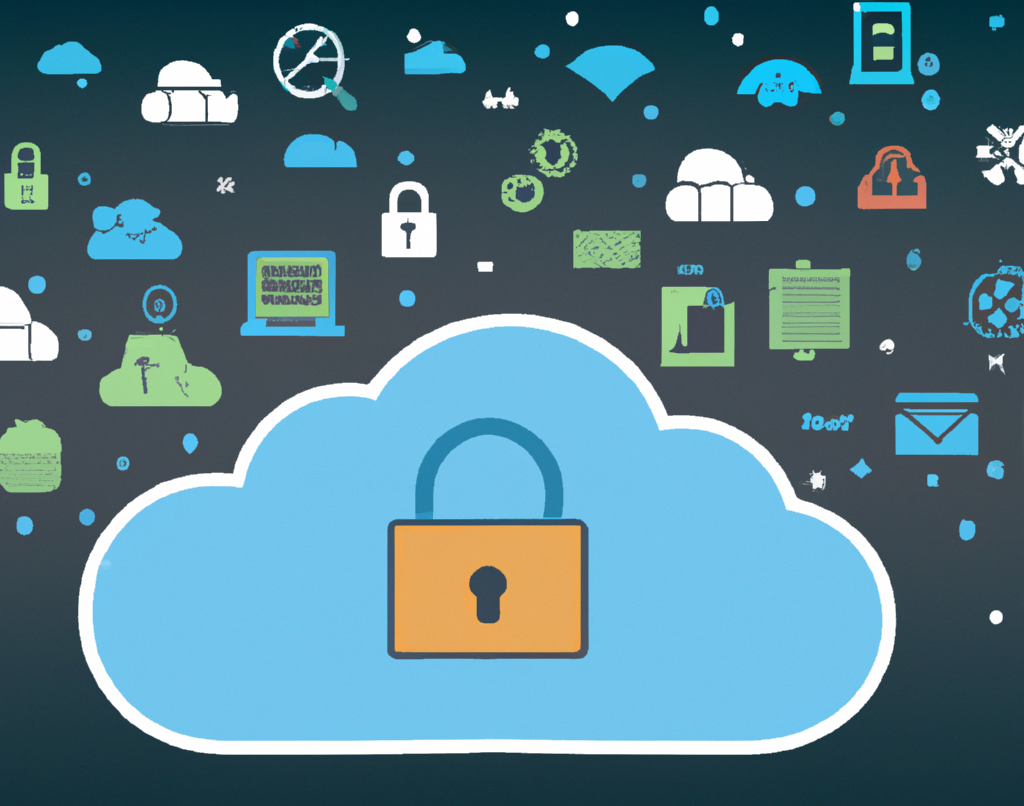Intro
With the rise of cloud computing, businesses have access to near-limitless resources and opportunities. However, with the easy availability of cloud data storage comes the potential risk of security breaches. To protect your data and keep it secure, there are several best practices that you should follow when storing data in the cloud. Let’s take a look at some of these key practices.
Encryption
Encryption is the process of converting plain text into a coded format that can only be deciphered by someone with the correct key. In the context of data security in the cloud, encryption is used to protect data both in transit and at rest.
When data is in transit, it is vulnerable to interception by malicious actors. To protect data in transit, organizations should use secure protocols such as HTTPS and SSL/TLS. These protocols encrypt the data as it travels over the internet, making it unreadable to anyone who intercepts it.
When data is at rest, it is stored on servers in the cloud. To protect this data, organizations should use encryption to scramble the data so that it is unreadable without the correct key. Many cloud providers offer encryption services, but organizations can also use their own encryption tools.
Encryption is one of the most important tools for protecting your data in the cloud. Encryption scrambles your data so that it can only be read by those with an encryption “key”—essentially a password to unlock the scrambled text and view its contents. It’s important to use strong encryption methods such as AES-256 or RSA-2048 to ensure that your data remains secure even if it falls into the wrong hands.
Additionally, make sure you store any encryption keys separately from your encrypted data; if someone gains access to both, they will be able to easily decrypt your files.
Access Control
Access control is the process of restricting access to data and systems based on the identity of the user. In the context of data security in the cloud, access control is used to ensure that only authorized users can access sensitive data.
One common access control method is the use of user accounts and passwords. Users are required to provide a unique username and password to access data and systems. However, this method can be vulnerable to attack if passwords are not properly secured. Organizations can strengthen access control by using multi-factor authentication, which requires users to provide multiple forms of identification, such as a password and a fingerprint.
Another access control method is the use of role-based access control (RBAC). With RBAC, users are assigned roles, such as administrator or user, and are granted access to data and systems based on their role. This method is useful for organizations with complex access control requirements.
Password Protect Your Accounts
In addition to encrypting your stored files, you also need to make sure that all accounts used for accessing cloud services are protected by strong passwords. Passwords should be at least 8 characters long and contain a combination of numbers, letters, and special characters (such as punctuation) in order to maximize their strength. Additionally, use two-factor authentication whenever possible; this adds an extra layer of protection by requiring users to input additional information (like a code sent via text message) before they can log into their account. This makes it much harder for hackers or malicious actors to gain access without authorization.
Monitor Activity Regularly
Finally, it’s important to regularly monitor activity on your cloud accounts and systems for any suspicious actions or changes made without authorization.
Monitoring is the process of keeping track of activity on systems and networks to detect suspicious activity. In the context of data security in the cloud, monitoring is used to detect and respond to security threats.
One common monitoring method is the use of security information and event management (SIEM) systems. SIEM systems collect data from various sources, such as logs and network traffic, and use algorithms to identify suspicious activity. This data can be used to generate alerts or create reports that highlight potential security issues.
Another monitoring method is the use of security automation and orchestration (SAO) systems. SAO systems use machine learning and artificial intelligence to analyze data and identify potential security threats. They can also be programmed to take action automatically in response to a threat, such as quarantining a device or blocking network traffic.
By monitoring user activity logs, you can quickly detect any unauthorized or malicious activity on your accounts and take action before any serious damage is done. Additionally, make sure you have policies in place regarding who has access to what resources—this way, unauthorized users won’t be able to access sensitive information or make changes without permission.
To Conclude
Data security in the cloud is a critical concern for organizations of all sizes. By following best practices such as encryption, access control, and monitoring, organizations can ensure that their data is protected while taking advantage of the benefits of the cloud. It is important to regularly review and update security measures to adapt to the ever-evolving threat landscape. By staying vigilant and taking proactive measures, organizations can ensure the safety and integrity of their data in the cloud.
